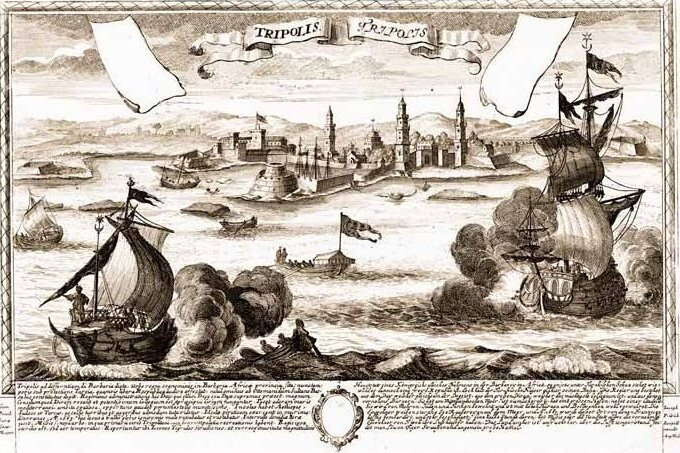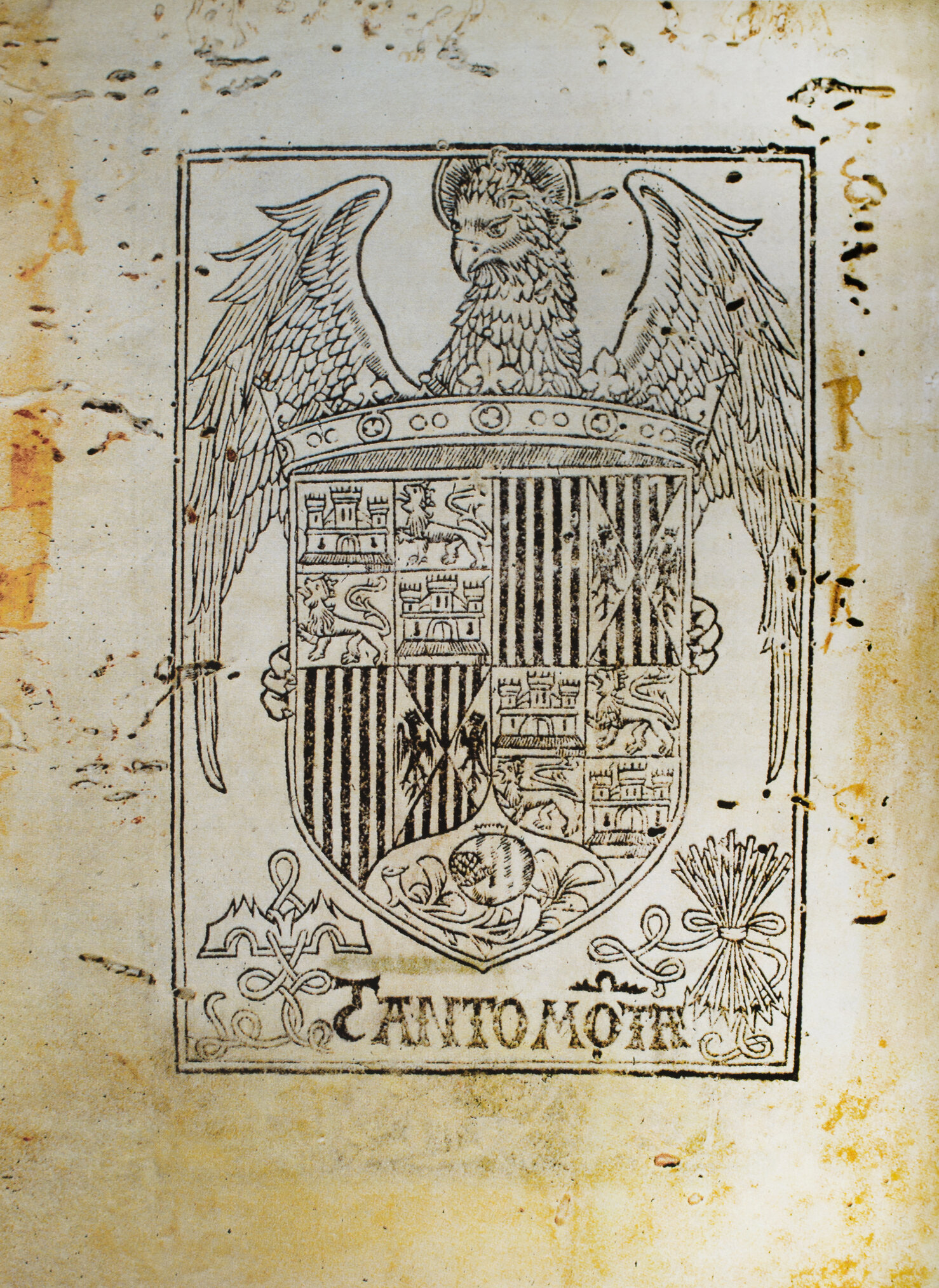ottoman period.

Siege of Tripoli, Capture by the Ottomans, 1551
The Ottomans in Libya
Ottomans in Libya
During the time that the Ottoman Empire was establishing its roots in North Africa, the Spanish, in the name of the Crown of Aragon, invaded and captured Libya in the 1510 maritime campaign, now known as the Conquest of Tripoli. Historians have stated that the human cost of the invasion was immense: thousands of people were slaughtered and thousands more were imprisoned and enslaved1. The bodies of those who died during the battle were reputedly strewn across all areas of Tripoli2. Tripoli was used as a base for the Spanish Crusaders, but historians have determined that they were successfully prevented from proceeding further inland due to significant resistance from the local populations who forced the Crusaders to stay on the defensive3.
Coat of Arms of Isabel I of Castile and Fernando II of Aragon. At Officium Parvum Beatae Maria Virginis, Paris, 1500, by Thielman Kerver. Biblioteca Nacional, Madrid
In 1551, after incessant attacks from the Catholic Crusaders, the Libyans decided to seek assistance from the Ottomans in their resistance to the Spanish Invaders. The Ottoman Empire sent soldiers to Libya to launch attacks against the Crusaders, who were still based in Tripoli. Initially despite fighting and laying siege around Tripoli, the Ottoman armies failed to capture the city4. More soldiers, under the command of Turgut Reis, one of the most accomplished figures in Ottomans naval history, were sent to Tripoli, intensifying the attacks against the Spanish. Eventually, in 1551 the Spanish capitulated to the pressures applied by the army of the Ottoman Empire and retreated from Tripoli, leaving Libya under Ottoman rule5. Thereafter, the provinces of Tripolitania, Cyrenaica and Fezzan were joined into one regency, Libya, which became part of the Ottoman Empire.
Turkish Postage Stamp of Famous Naval Admiral Turgut Reis (1485-1565)
From 1711 to 1835, Libya was mainly under the rule of the Karamanli dynasty, which managed to establish its protectorate as a largely autonomous region, although still aligned with the Ottaman Empire. During this period, Libya was mainly self governed by the Karamanli court. However, in 1793, a succession war began which is known as the Tripolitanian Civil War, which led to the deposing of Hamet Karamanli the then ruler of Libya, by Ali Benghul, an officer of the Ottoman Empire. The war ended in 1795, when Hamet and his brother Yusuf aided by the Bey of Tunis, returned to Tripoli and took the throne6. The Karamanli dynasty continued to rule Libya until 1835, when the Ottoman Revolt of Tripolitania began, and direct Ottoman rule was reimposed. This was a revolt by tribal leaders, against central Otterman rule and only ended after the death of Ghuma al-Mahmudi in 1858, who along with Abd al-Jalil led the revolt7.
The region continued under direct Ottoman rule, until the invasion by Italy in 1911, which brought an end to the Ottoman Empire in Libya.
Kemal Ataturk and Major Binbaşı (Major) in Darnah, Tripolitania (present-day Libya), 1912.
Public Domain, via Wikimedia Commons.
FOOTNOTES.
Kissling, H. J.; Spuler, Bertold; Barbour, N.; Trimingham, J. S.; Braun, H.; Hartel, H. (1997). The Last Great Muslim Empires
“Libya and the Ottoman Empire.” The Libya Observer. Accessed January 11, 2021. https://www.libyaobserver.ly/news/libya-and-ottoman-empire.
Kissling, H. J.; Spuler, Bertold; Barbour, N.; Trimingham, J. S.; Braun, H.; Hartel, H. (1997). The Last Great Muslim Empires
“Libya and the Ottoman Empire.” The Libya Observer. Accessed January 11, 2021. https://www.libyaobserver.ly/news/libya-and-ottoman-empire.
ibid.
St John, Ronald Bruce (2002). Libya and the United States: two centuries of strife. Philadelphia: University of Pennsylvania Press. p. 20.
Ahmida, Ali Abdullatif (2002). The Making of Modern Libya. Albany, New York: SUNY Press. p. 57



